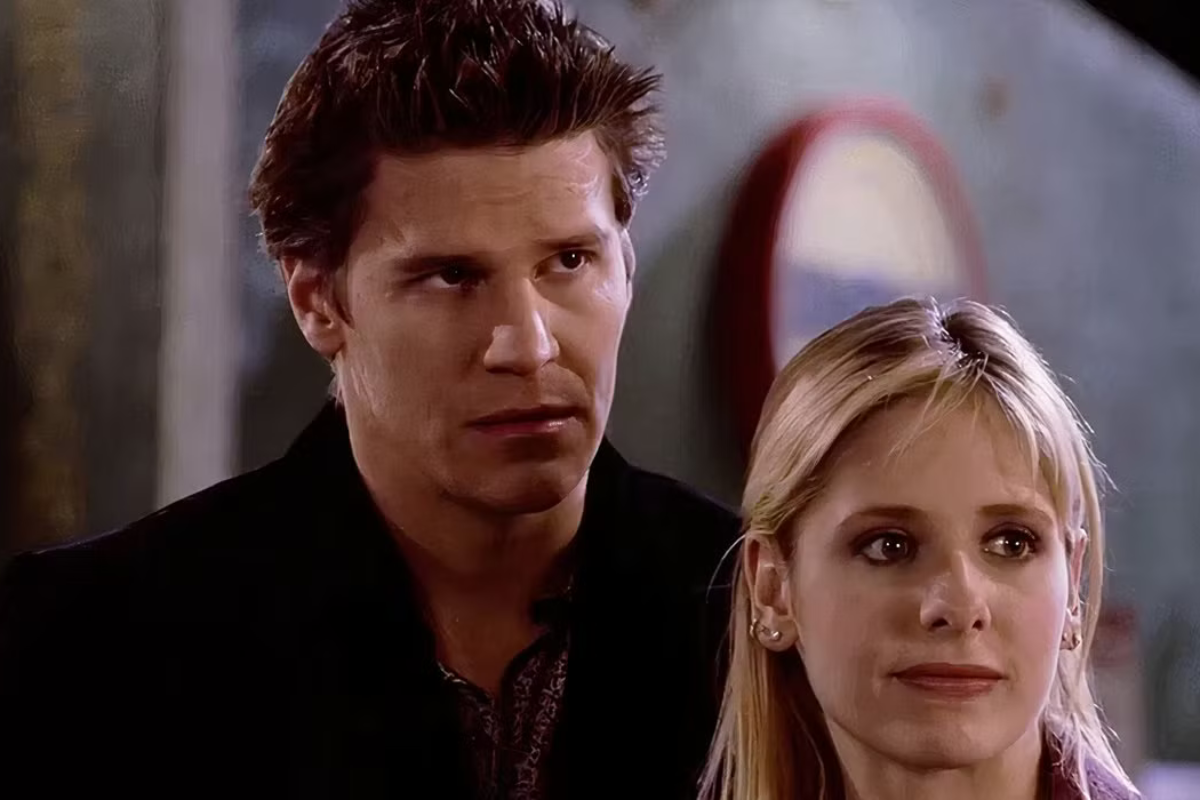Why Spec Scripts Fail: Screenwriting Format – Details vs. ‘Detailitus’ Part 1
We discussed, in our previous two articles Backstory Thru Subtext, Part1 & Part 2, how just a few words can make a big difference in a scene. This time we…
We discussed, in our previous two articles Backstory Thru Subtext, Part1 & Part 2, how just a few words can make a big difference in a scene. This time we will explore the screenwriting format world, and how a very few words can create a vivid picture in the mind of the reader.
Over the years, I have been fortunate to be the final reader of some great scripts of films that have gone on to become Oscar winners, (Babel) and (Michael Clayton). Unfortunately there are many, many more I have read that are so verbose and novelesque that all they earn is the Dickensian ‘word repetition award.’ It is a challenge to read them with a positive attitude. No matter how hard I try it is almost impossible to find the joy in such scripts.
One of the worst screenwriting format and style information sources for fledgling spec scriptwriters is the plethora of script sites on the internet. Most, but not all, of what is posted in screenwriting format is a copy of some umpteenth re-write post purchase or a late version of a production script. Unfortunately, very few, if any, of the specs that sold ever appear on those sites in their original condition.
Many times, I can tell if the scribe of my current analysis project can write just by what is on (or not on) the title page. An attempt to impress managers, agencies, analysts or readers with an e-mail address along the lines of “cutbootsproductions@gmail.com” is a dead give-a-way. First; writers don’t have production companies (and if they did the project would be produced in-house), and Second; if anything, they create a Personal Service Corporation for tax purposes. Another tell-tell sign is the g-mail domain. Thus, in one line, the title page now screams amateur, readers beware.
This brings me to just the look of the title page. With the availability of all the books and software on screenwriting format both online and off, there is absolutely no excuse for non-conforming, creative title pages. The spec script title page is NOT the place to be creative if a burgeoning writer wishes to be taken seriously in this business. A fancy font, misplaced or missing info on the title page means that this tome is now a step closer to the round file before the first page is even seen. Given the volume of ‘scripts’ on the streets, this is one way the industry ‘separates the wheat from the chaff.’ Title page creativity does not impress in the way the writer hopes it will. In fact it is quite the opposite. The first line on the first page usually confirms this ‘snap’ judgment.
The surprising thing to me is that many times it is female writers who question me regarding the “Title Page Rule.” So, I ask those ladies still dating, “How many words can a guy get out of his mouth before you’ve decided you are going to hang with him?” The most frequent answer I get is not the number of words but the first impression he makes on approach. “That’s the title page,” I share with them. My next question for them is, “Assuming he passes the ‘approach test,’ how many words?” These answers most often fall in between 7 to 10. “The first line tells a lot, right?” This self-revealing answer usually settles any arguments. I share with them that he may overcome these negatives with charm and persistence. However, and the ladies agree, it will take some time and expense to negate the first impression.
Scriptwriting is not dating, and you rarely have any second chances. The one thing you don’t want is a reader, at any level, reading your months/years of work with a negative attitude that your script must now overcome. You do not have time to recover.
One longstanding piece of advice given all screenwriters is, ‘Create memorable moments in your script.’ The Caveat; Make sure the moments are positive from the title page forward rather than a reader moaning, ‘Oh NO, not another one.’ Attention to these title page and other, vital screenwriting format details is what invites the reader to view your script as a potentially pleasant experience. It helps set the tone for the reader that quite possibly there is a good read ahead. It also makes it less likely you and your work will be mentally tossed in the proverbial round file before page one is seen.
Man, “THAT'S COLD.” Yep sure is. Here’s the bad news-good news explanation. Over 60,000 screenplays, plays, outlines and treatments were registered with the WGAw in 2012. Question, how many made it through the vetting process? Less the one half of one percent (0.05%) made the cut and moved on into some part of the production process. You do the math.
Obviously some bad scripts made it through. This was exemplified by the disastrous movie summer of 2013 and the subsequent executive blood bath that followed in all the major studios. As Garth brooks sings, maybe it is better to have “Friends in Low Places.” Does the term ‘gatekeeper’ come to mind. Give the reader all the encouragement you can for each of them to say ‘yes’ and move your baby through kindergarten, eventually into college, then on to a $ucce$$ful career.
Every script plies a winding road (apologies to Sheryl Crow). Yes, even the Indies. By the time one reaches my desk many others have crashed and burned because the writers didn’t know the ‘rules,’ ‘conventions,’ ‘formats’ and ‘side streets’ well enough to know when, how, and where these rules can be bent or broken along that screenwriting format road. Writing in the style of Tarantino (Pulp Fiction), Stuart & de Souza (Die Hard) and Haggis (Crash) have been so badly copied so many times most readers utter an audible groan when another of that ilk crosses their desks. By all means, I encourage you to create your own style and voice. I suggest that you do this AFTER you have made your first gazillion dollar spec script sale. Unless you are self funding your project and are a brilliant storyteller, it helps to get your foot in the door before you experiment with your style and format. The era of super spec sales (mid 1990’s) has come and gone. It is now the era of cross platform entertainment. Create a unique voice, story or genre mix within established conventions to start. You sure don’t want to screw it up on the title page.
If spelling, typos, grammatical errors, tense changes, verbosity, detailitus (we’ll get to this in a minute, trust me) and logic errors are not addressed, when your absolute final draft is finished, by an anal retentive grammarian friend whose sole job is to proofread your masterpiece, it will crash and burn on Sheryl’s winding road (talk about a run on). But, I get ahead of myself (see how many "errors" you can find in this article).
Tell me, Oh Mighty “Carnac the Magnificent” (apologies to Johnny Carson), you ask, why this attention to screenwriting format rules. Let’s go back to the “Dating” analogy. If the guy has dirty nails, smelly clothes, scruffy shoes (unless by design) he’s a candidate for the ‘thanks but no thanks pile,’ right? The sloppy writer who ignores accepted screenwriting conventions probably doesn’t care enough about theme, story, plot, character, dialogue or just about anything else that has to do with storytelling. His or her work ends up on the reject pile. Why? Numbers, just sheer numbers. More to read before I sleep... More to Read before I sleep (apologies to Robert Frost).
All that said, here’s some good news that is especially true for thriller, horror and action movie scripts. Complete sentences not required. However, this is not a justification for sloppy grammar (unless a character trait).
To keep the reader riveted to your pages here’s another nugget: write all paragraphs as compelling poetry, no longer than 2-3 lines, in the present tense with subject and object close to each other. And you thought English 101 was in the deep dark past.
Cut out the flowing prose. Use essentials only. Involve the reader in your story. Their imagination trumps your verbose description every time.
That brings us to DETAILITUS. Any thoughts as to what this word means? No, don’t ‘Google’ it.
Let’s examine a just few of the ‘standard’ amateur script signatures in no particular order.
• Calling out title and credit placement,
• Explicit camera angles or shots,
• Novelette length paragraphs,
• Detailed scene descriptions,
• Copious character details,
• Incorrect screenwriting format or font,
• Directing on the page,
• Excessive page count,
• Directing the actor,
• Cast of thousands,
• Scene numbers,
• Cut to,
• POVs
Anything other than pure story means the scribe has step into the jealously guarded purview of another’s discipline. This misstep is another big faux pas that screams amateur writer.
How do you convey your wishes as a writer without stomping on someone’s professional “toes”? You show skill as a writer. You, by your writing, DEMONSTRATE that in order to show this story there is no alternative than for every craft to follow the deft clues you, as the talented scribe you are, have lain out with your tools (words) in a complete yet minimalist picture on the page. Craft your page in such a way that the picture plays out on the inside of the reader’s forehead. You let them fill in the missing pieces. This is what involves them and keeps a reader fired up enough to turn each page.
The explicit details on screenwriting format referenced above are the purview of a production script NOT a spec script. You do not want any distractions that jar the reader from your story. Your job is to paint a vivid story with as few words as possible then get the hell out of the way.
Let’s look at this first page from The Coldwater Conspiracy and see how much we can tell about the location, the scene, and the character behavior in the first five lines.
What details are in the opening lines of this script? You can use the scene numbers to comment (no scene numbers in spec scripts).
The story appears to start in or at and established complex in the late 1950’s (slug states University, scene description states ivy framed doors) that fades into view. Why fade into view or start here? The fade could be from the character POV or because we “see” this unfold through a large storm or both. However, the scene description states he scurries not runs toward the doors. Why? We will learn the screenwriting format details and receive answers to these questions and more as the scenes on the first page progress.
Here’s a person with no apparent concern for his health or appearance (not stated yet inferred by behavior and clothing). He is out in inclement weather with no protection for himself or his significant papers (or else why carry them), scurries vs. runs, dressed in just a well-worn tea shirt and torn shorts. Note, that shoes and socks are not mentioned because, as will be shown in a screen moment, their description is not a significant piece of information. This is a detail that can be filled in by the production designer, art department, wardrobe, director and/or actor later in production. It has no immediate bearing on the story. He also takes poor care of his belongings as his glasses are taped up.
If you read the scene and not cheated yourself with a reader like “leap of faith” to this partial explanation, many of these questions were in the back of your mind, consciously or subconsciously, as you painted the picture on the inside of your forehead. All of this information and these questions created by just the first five lines of the script.
Here’s your ‘mission,’ should you choose to accept it (acknowledgement to Bruce Geller), take the rest of this script page and detail what you can about the time frame, the environment, the character and his backstory, his flaw, his state of mind along with anything else that you can glean or infer about our “scurrying man.”
Tune in same time, same channel next month (some of you old enough will notice I left out the Batman reference, but it pop into your mind anyway) as we explore together what else there is to learn from this one page without encroaching on another professional area.
Related Articles on Screenwriting Format Tips:
- More Why Spec Scripts Fail articles by Stewart Farquhar
- Meet the Reader by Ray Morton
- Ask the Expert: Sluglines Slugfest
- Articles from AKA Dr. Format Dave Trottier
Tools to Help:
Stewart Farquhar holds Screenwriting and Advanced Screenwriting certificates from the Professional Program at The UCLA School of Theatre Film and Television. Stewart has analyzed over 10,000 scripts for private, agency and studio clients. He is a produced playwright, active screenwriter and an in demand lecturer. He presents as a guest lecturer in Master’s Level screenwriting programs at UC Berkeley and Loyola Marymount University. He has been a final story analyst for both Slamdance and scripts headed to Cannes for funding. Visit Stewart's site TheReadersCompany.com and follow him on Twitter, Facebook, and LinkedIn. Email: stewart@thereaderscompany.com







